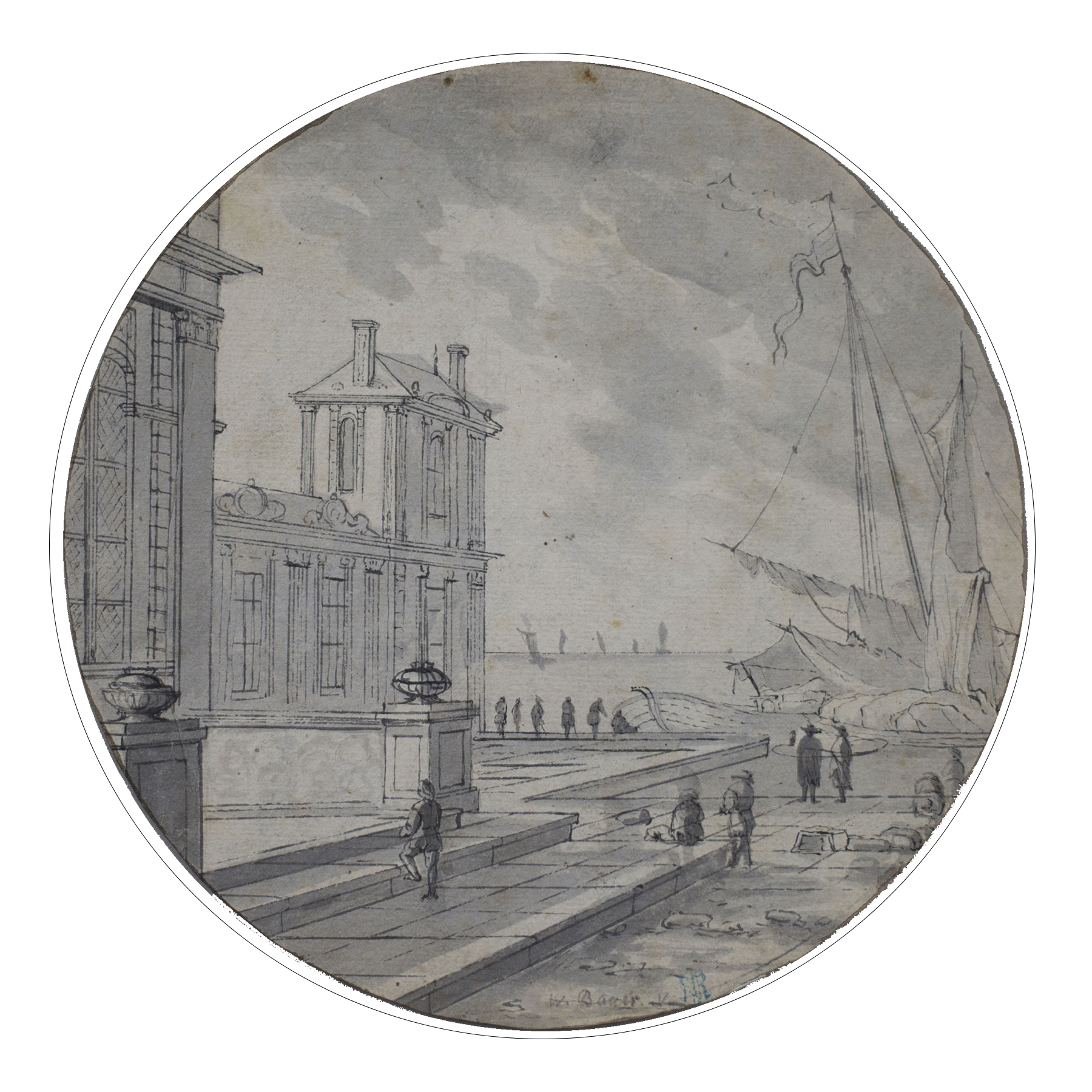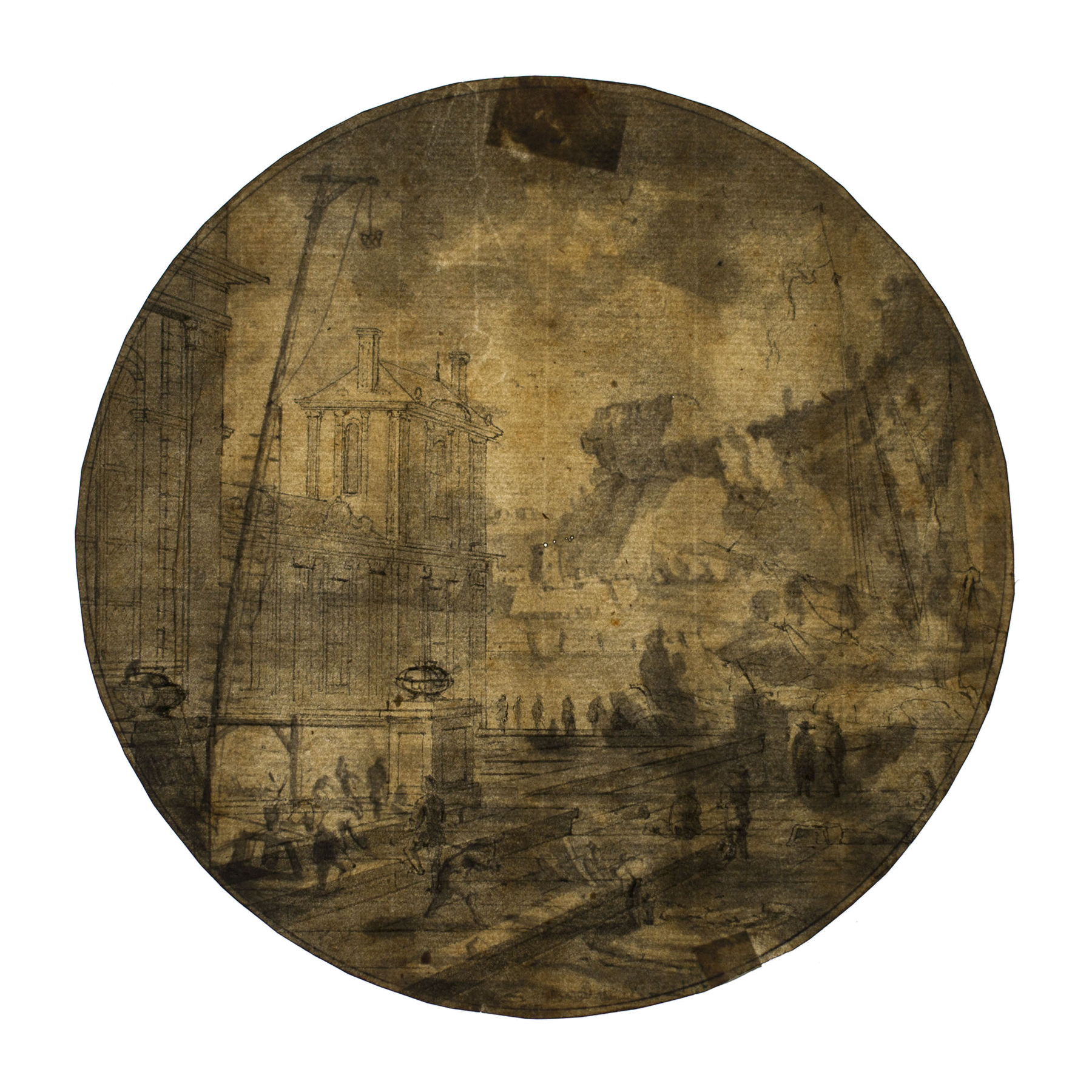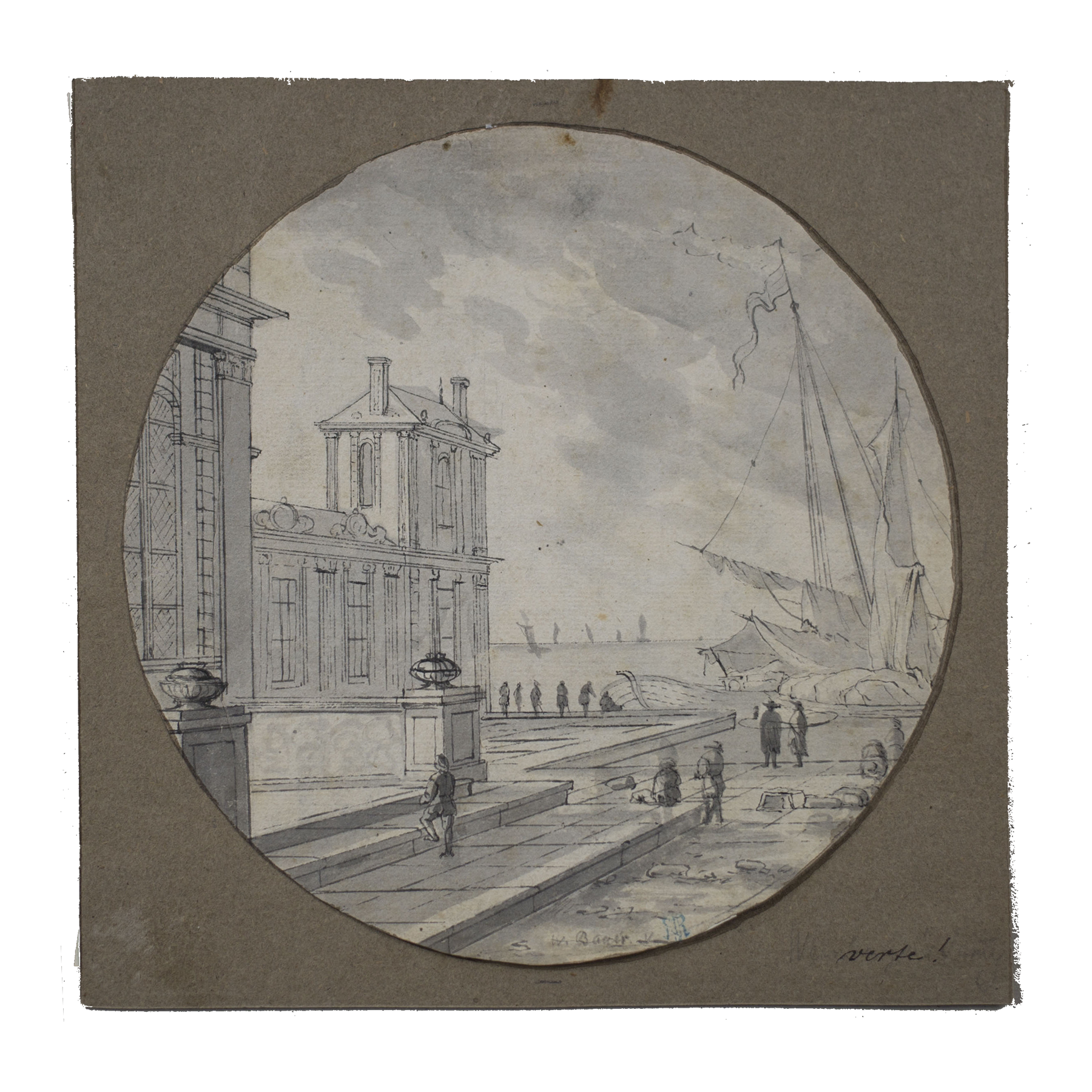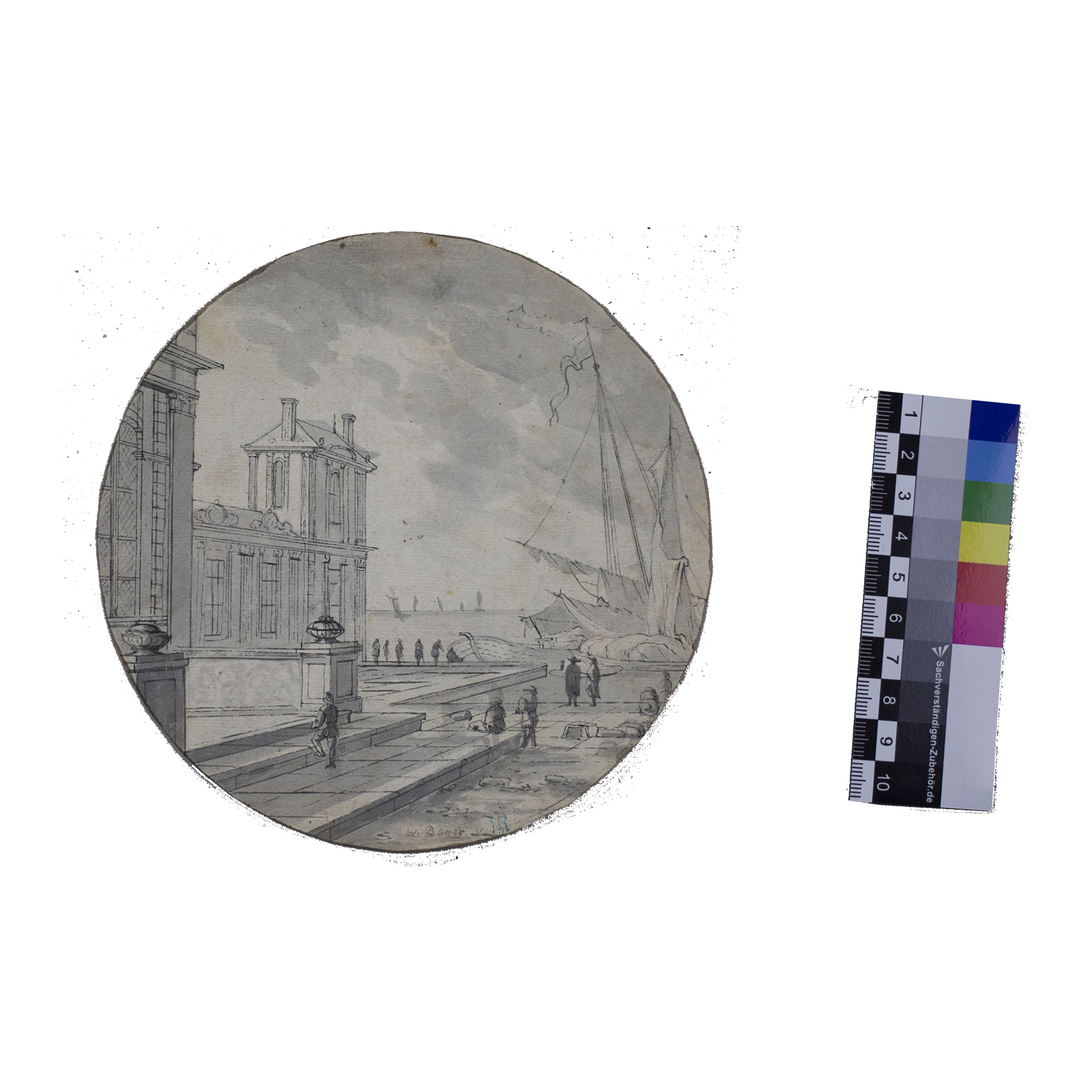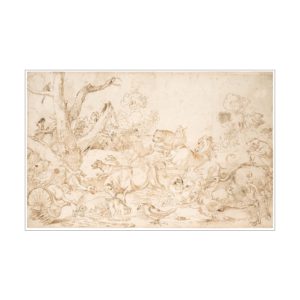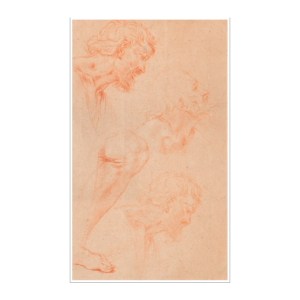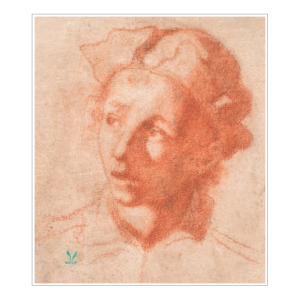Johann Wilhelm Baur
Strasbourg – Vienna
Tondo representing a maritime city (front) and a fortified coast (back)
Gray ink and wash.
Diam 153 mm – 6 1/32 in.
Annotated W. Bauer bottom right.
Origin: Blue stamp from the collection of Baron Carl Rolas du Rosey (Prussian general, died 1862) (Lugt 2237)
Johann Wilhelm Baur, born in Strasbourg on 31 May 1607 and died in Vienna on 1 January 1640, was a German painter and engraver who was highly regarded for his talent as a small-format landscape artist. Johann Wilhelm Baur came from a family of goldsmiths, sons and grandson of artisans. He was a student of the Strasbourg draughtsman and engraver Friedrich Brentel. After completing his studies, he undertook the traditional companionship tour.
Around 1630, Baur went to Italy, first to Naples, then to Rome. There he obtained his first artistic commission: a series of engravings intended to illustrate a work. Subsequently, he worked for major Italian families such as the Farnese, Colonna and Borghese.
In Rome, Johann Wilhelm Baur developed his specificity as a painter of small formats. His works, made in gouache on vellum, describe ports, landscapes, battle scenes and allegorical subjects. In 1636 he produced for Don Paolo Giordano II Orsini, Duke of Bracciano, a work comprising sixteen etchings entitled The new book of Nations.
In 1637, Baur left Rome for Vienna, where he attracted the attention of Emperor Ferdinand III. There he married Anna-Maria Faustner, widow of a Court silversmith. In Vienna he produced his most significant work: the one hundred and fifty plates of the Metamorphoses from Ovid. His creations were highly sought after by collectors and foreign amateurs, such as Cardinal Mazarin who bequeathed around ten to Louis XIV. This series is still kept at the Louvre Museum.
Johann Wilhelm Baur was a draughtsman of great skill. His scenes teeming with characters, such as The Battle of Osterweel, Pope’s procession or The Tower of Babel, bear witness to its astonishing artistic vigor. Nourished by Italianness, in Vienna he achieved the perfect synthesis of the artistic currents of his time in Austria, soon foreshadowing the fantastic explosion of the Baroque.
Condition report: Good general condition. Some light bites.
